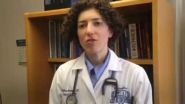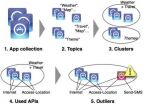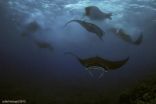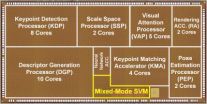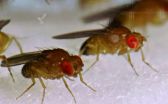(Press-News.org) CLEMSON, S.C. — Clemson University researchers have developed nanoparticles that can deliver drugs targeting damaged arteries, a non-invasive method to fight heart disease.
Heart disease is the leading cause of death in the U.S., according to the Centers for Disease Control and Prevention. One of the standard ways to treat clogged and damaged arteries currently is to implant vascular stents, which hold the vessels open and release such drugs as paclitaxel.
The researchers, led by Clemson bioengineering professor Naren Vyavahare, hope their advanced nanoparticles could be used alongside stents or in lieu of them.
"Healthy arteries have elastic fibers that provide elasticity. They are like rubber bands in the tissue that allow expansion and recoil during blood flow," Vyavahare said. "In most cardiovascular diseases, elastic fibers in arteries get damaged, creating hooks that can be used to target drugs."
The nanoparticles, coated with a sticky protein, latch onto damaged arteries and can deliver a drug to the site in slow release fashion. These nanoparticles can be engineered to deliver an array of drugs to the damaged or clogged artery, a common example being paclitaxel, which inhibits cell division and helps prevent growth of scar tissue that can clog arteries. These particles also have unique surfaces that allow prolonged circulation time, providing more opportunities for these particles to accumulate at the damage site.
"We developed nanoparticles that have antibodies on the surface that attach to diseased sites like Velcro," said Vyavahare. "Interestingly, these newly created nanoparticles only accumulate at the damaged artery, not in the healthy arteries, enabling site-specific drug delivery."
"These nanoparticles can be delivered intravenously to target injured areas and can administer drugs over longer periods of time, thus avoiding repeated surgical interventions at the disease site," said Aditi Sinha, a Clemson graduate student and lead author on a paper soon to be published in journal Nanomedicine: Nanotechnolgy, Biology and Medicine.
The work is a promising step toward new treatments for cardiovascular and other diseases. The research team is testing the nanoparticles to determine the most effective drug dosage for vascular tissue repair. This technology can have variety of applications in other diseases, such as chronic obstructive pulmonary disease, Marfan syndrome and elastic fiber-related disorders, such as aortic aneurysms.
INFORMATION:
Clemson University
Ranked No. 21 among national public universities, Clemson University is a major, land-grant, science- and engineering-oriented research university that maintains a strong commitment to teaching and student success. Clemson is an inclusive, student-centered community characterized by high academic standards, a culture of collaboration, school spirit and a competitive drive to excel.
This material is based upon work supported by the National Institutes of Health under grant nos. R01HL070969-08, R21HL084267 and P20GM103444 and Hunter Endowment at Clemson University. Any opinions, findings and conclusions or recommendations expressed in this material are those of the authors and do not necessarily reflect the views of the National Institutes of Health.
Clemson researchers develop sticky nanoparticles to fight heart disease
2014-02-18
ELSE PRESS RELEASES FROM THIS DATE:
Transgender patients discriminated against for health care services
2014-02-18
VIDEO:
Discrimination against transgender people -- as many as one million Americans identify themselves as transgender -- should immediately be addressed by the medical establishment, backed by policy change at the...
Click here for more information.
DETROIT – Discrimination against transgender people –as many as one million Americans identify themselves as transgender – should immediately be addressed by the medical establishment, backed by policy change at the national ...
Frequent school moves can increase the risk of psychotic symptoms in early adolescence
2014-02-18
Researchers at Warwick Medical School have shown that frequently moving schools during childhood can increase the risk of psychotic symptoms in later years.
The study, published in the Journal of American Academy of Child and Adolescent Psychiatry, found that school mobility during childhood heightens the risk of developing psychotic-like symptoms in early adolescence by up to 60%.
Suffering from psychotic-like symptoms at young age is strongly associated with mental health problems in adulthood, including psychotic disorders and suicide.
Professor Swaran Singh, ...
Wisdom of app stores: Early identification of malicious Android apps from Google Play
2014-02-18
"How do I know that the new installed app behaves as described?" asks Andreas Zeller, professor of software engineering at Saarland University. So far experts have identified so-called malicious apps by checking their behavior against patterns of known attacks. "But what if the attack is brand-new?" asks Zeller.
His group seems to have found a new method to answer all these questions. Zeller summarizes the basic idea as follows: "Apps whose functionality is described in the app store should behave accordingly. If that is not the case, they are suspect."
His research ...
Do Guam mantas plan moon parties?
2014-02-18
Several of Hartup's paddler and free diving friends told her about seeing mantas congregating purposefully in an area where surgeonfish were spawning. Since they were able to give her an exact date, Julie was able to calculate the moon phase, which is important as many fish synchronize their spawning with the moon. Using this information she predicted when the spawning event would occur that upcoming year and was there to witness a shoal of spawning surgeonfish accompanied by a fever of mantas.
Hartup's research findings not only highlight important information about ...
Environmental issues examined through cohesive efforts
2014-02-18
CHICAGO – Solving crucial environmental issues such as global warming and water supply involves managing competing interests, uncertainty and risk, and this is best done through meaningful collaboration in a neutral environment.
Arizona State University Barrett Honors College Lecturer John N. Parker discussed the ways in which scientists, stakeholders and policy makers can communicate effectively by coming together through boundary organizations at the annual meeting of the American Association for the Advancement of Science in Chicago.
Boundary organizations are ...
NUS researchers make new discovery of protein as a promising target for treatment of ATC
2014-02-18
Anaplastic thyroid carcinoma (ATC) is an aggressive type of cancer with a poor prognosis for which there is currently no effective treatment. Researchers from the National University of Singapore (NUS) have discovered for the first time that an epithelial basement membrane protein, called laminin-5 gamma-2 (LAMC2), has the potential to be an ideal target for the treatment of ATC.
Led by Professor H. Phillip Koeffler, Senior Principal Investigator, and Dr Manoj Garg, Research Fellow, at the Cancer Science Institute of Singapore (CSI Singapore) at NUS, the team is also ...
KAIST developed low-powered, high-speed head-mounted display with augment reality chip
2014-02-18
Daejeon, Republic of Korea, February 17, 2014 – Walking around the streets searching for a place to eat will be no hassle when a head-mounted display (HMD) becomes affordable and ubiquitous. Researchers at the Korea Advanced Institute of Science and Technology (KAIST) developed K-Glass, a wearable, hands-free HMD that enables users to find restaurants while checking out their menus. If the user of K-Glass walks up to a restaurant and looks at the name of the restaurant, today's menu and a 3D image of food pop up. The Glass can even show the number of tables available inside ...
Gender and genes play an important role in delayed language development
2014-02-18
Boys are at greater risk for delayed language development than girls, according to a new study using data from the Norwegian Mother and Child Cohort Study. The researchers also found that reading and writing difficulties in the family gave an increased risk.
"We show for the first time that reading and writing difficulties in the family can be the main reason why a child has a speech delay that first begins between three to five years of age," says Eivind Ystrøm, senior researcher at the Norwegian Institute of Public Health.
Ystrøm was supervisor of Imac Maria Zambrana, ...
Researchers identify new way to control stone fruit disease
2014-02-18
Researchers at the University of Kent and East Malling Research have identified a new way of controlling a fungal disease that can have a devastating impact on the UK's valuable cherry and plum crops.
Brown rot disease – caused by the agent Monilinia laxa – attacks stone fruit as well as causing blossom wilt and twig canker. Traditionally, this has been controlled through the use of fungicide treatments, but in some cases these are now becoming ineffective.
Now researchers from the two organisations have identified a new strategy for controlling the disease, using biological ...
In search of lost genes
2014-02-18
How do new genes arise? Current research shows that so-called "orphan genes" may appear as if by magic as a result of mutations in segments of DNA that previously had no function. Orphan genes were first discovered in the fruit fly but are found in all organisms, including man. Strikingly, up to 30 per cent of the total number of genes in an organism may be orphans and these genes may rapidly acquire functions. Scientists from the Institute of Population Genetics of the University of Veterinary Medicine, Vienna (Vetmeduni) have now investigated the fate of orphan genes. ...
